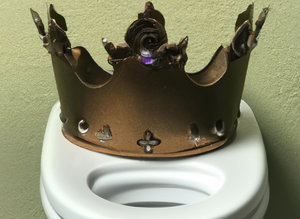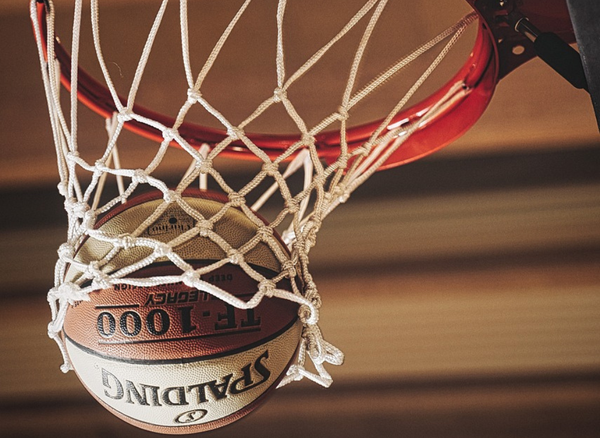Basketball isn't just about soaring dunks and swishing three-pointers; it's also about the sly art of passing – specifically, the bounce pass. This under appreciated pass is like the stand-up comedian of basketball techniques: it doesn't always get the glory, but when done right, it can steal the show and get the assist.
The Bounce Pass
When you throw a bounce pass, you're not just passing the ball; you're sending a message to gravity that you're in charge. This pass originates from your fingertips, dances with the floor, and gracefully ends up in your teammate's hands, usually around chest high. It's a two-player tango where the ball bounces about two thirds of the distance to the intended target, making it harder for defenders to intercept.
Why Bounce Passes Bounce Back
Bounce passes are the ninjas of basketball passing. They sneak under the outstretched arms of defenders and pop up when least expected. In certain situations, like when you're dealing with a pesky defender who has more arms than an octopus, a well-executed bounce pass can be the difference between a turnover and an assist.
The Mechanics of Mastery
To master the bounce pass, you need to step forward with your dominant foot, aim for a point on the floor, and push the ball with both hands. Your fingers should extend, and your thumbs should snap down, giving the ball backspin for a soft landing into your teammate's hands. It's like you're trying to hit a bullseye on the floor, not in the chest of the other player.
The One-Handed Wonder
The one-handed bounce pass is the cool cousin of the two-handed pass. It's flashier, quicker, and has a bit of swagger. You extend one arm, snap your wrist, and throw the ball to the floor with a bit of side-spin. It's perfect for when you're on the move and need to get the ball to your teammate on the left side or right side without telegraphing your intentions to the defense.
The Overhead Pass
While the bounce pass keeps it low, the overhead pass takes the aerial route. It's the basketball equivalent of sending an air pass. You extend your arms above your head and push the ball with both hands, aiming to get it to your teammate without it being swatted by those pesky defenders. It's great for long distances or when you're trapped by the defense.
The Outlet Pass
After a rebound, the outlet pass is your ticket to a fast break. It's a quick, often one-handed pass thrown to a teammate to initiate an offensive play. Think of it as the bounce pass's best friend – it's all about speed and getting the ball moving up the court before the defense can set up.
The Low Post Bounce Pass
When you've got a teammate playing in the low post, a well-placed bounce pass can be the key to unlocking the defense. You aim for the floor near their feet, allowing the ball bounce up into a position where they can catch it easily and make a move to the basket. It's a subtle art, like threading a needle with a basketball.
Chest Passes
The chest pass is the traditional, straight-laced sibling of the bounce pass. You hold the ball at chest level and throw the ball directly to your teammate's chest. It's quick, it's efficient, and it's what your coach drilled into you since day one. But sometimes, it's just too predictable, and that's where the bounce pass comes in with its element of surprise.
The Art of Deception
A great bounce pass is all about deception. You look one way and pass another. You make the defense think you're going for a chest pass, then you hit them with a bounce pass. It's like being a magician on the court – now you see the ball, now you don't (until it's too late for the defense).
Practice Makes Perfect
Like any skill worth having, the bounce pass requires practice. You need to get the feel for the distance, the force, and the direction. It's not just about throwing the ball; it's about sculpting the air around it. So grab a teammate and start practicing those bounce passes until they become second nature.
The Power of Precision
Precision is key when executing a bounce pass. You need to gauge the distance, the angle, and the power behind your pass. It's like playing a game of pool, but instead of a cue stick, you have your arms, and instead of pool balls, you have a basketball and a teammate eagerly waiting to score.
Bounce Pass FAQs
There are many types of basketball passes. So why you use the bounce? Please browse through your frequently asked questions section to learn more about the bounce pass.
When should I use bounce passes instead of a chest passes?
Use a bounce pass when you need to get the ball to a teammate who is closely guarded, or when you want to pass the ball under the outstretched arms of taller defenders. It's also useful in tight spaces where a chest pass might be easily intercepted.
How can I improve my bounce pass technique?
Practice regularly with a focus on stepping forward with your dominant foot, aiming for a point on the floor, and using your fingers and thumbs to give the ball the right amount of backspin. Work on both two-handed and one-handed bounce passes to become more versatile.
What's the most common mistake players make when attempting a bounce pass?
The most common mistake is not accounting for the distance and power needed. If you throw it too softly, the ball won't reach your teammate, and if you throw it too hard, it might bounce too high and become easy to intercept. Practice will help you find the right balance.
Summary
The bounce pass in basketball is a fundamental skill that adds depth to your game and keeps defenders guessing. It's a versatile pass that can be adapted for different situations on the court. By mastering the bounce pass, you become a more effective and unpredictable offensive player. Remember, practice is essential, and precision is your best friend when it comes to executing the perfect bounce pass.









